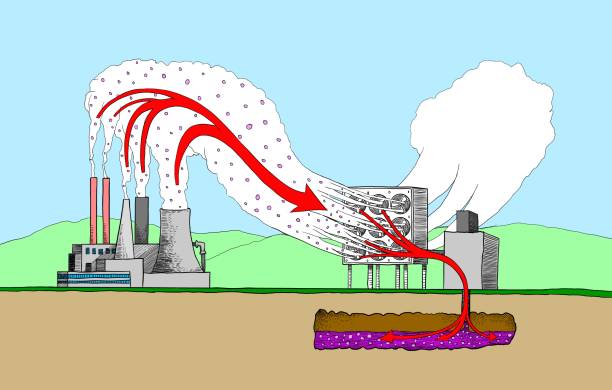Carbon capture technology is a process that captures carbon dioxide (CO2) emissions from industrial processes, such as power generation, before they are released into the atmosphere. The captured CO2 is then stored for later use or disposal, reducing the amount of CO2 emissions that contribute to climate change.
There are several different technologies for carbon capture, including post-combustion capture, pre-combustion capture, oxy-fuel combustion, chemical looping, and direct air capture. Each technology has its own specific process for capturing CO2 emissions, and the choice between them will depend on a number of factors, including the specific application, the availability of resources and infrastructure, and the cost and efficiency of the technology.
Of these technologies, direct air capture is considered by many experts to be the most promising. Direct air capture works by using large machines to absorb CO2 directly from the atmosphere, and it has the advantage of capturing CO2 emissions regardless of their source. Additionally, direct air capture has the potential to be used to address both point source emissions, such as those produced by power plants and industrial processes, and diffuse source emissions, such as those produced by transportation and agriculture.
Another advantage of direct air capture is that it can be integrated with other technologies, such as carbon storage and utilization, to create a complete carbon management system. For example, the captured CO2 can be stored underground for later use or disposal, or it can be used for enhanced oil recovery or the production of alternative fuels.
Despite its potential advantages, direct air capture is still in the early stages of development and is considered to be relatively expensive compared to other carbon capture technologies. Additionally, direct air capture requires a significant amount of energy to operate the machines and transport the captured CO2 to a storage facility, which raises concerns about the sustainability of the technology.
In conclusion, while there are several different technologies for carbon capture, direct air capture is considered by many experts to be the most promising. Direct air capture has the advantage of capturing CO2 emissions regardless of their source, and it has the potential to be integrated with other technologies, such as carbon storage and utilization, to create a complete carbon management system. However, direct air capture is still in the early stages of development and is considered to be relatively expensive, and it requires a significant amount of energy to operate. As such, it is an area of ongoing research and development, and it is likely that new and improved technologies will emerge in the coming years.







